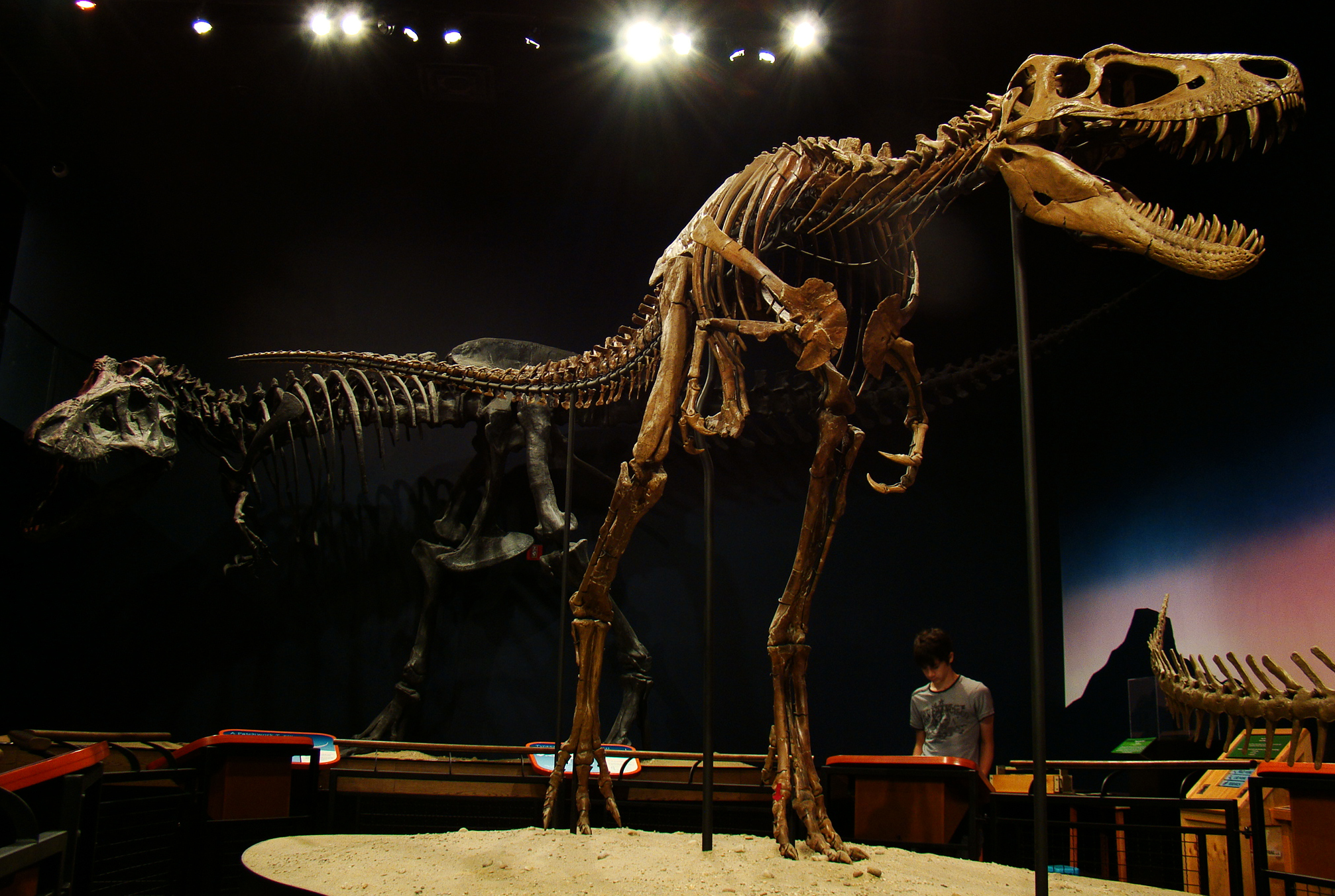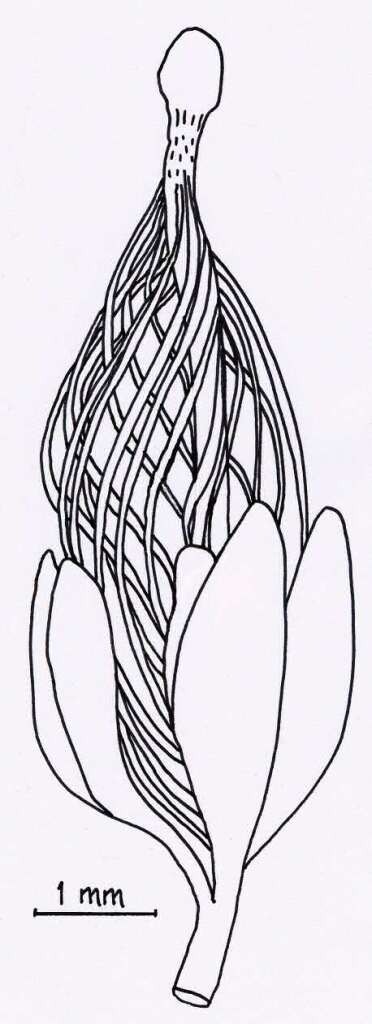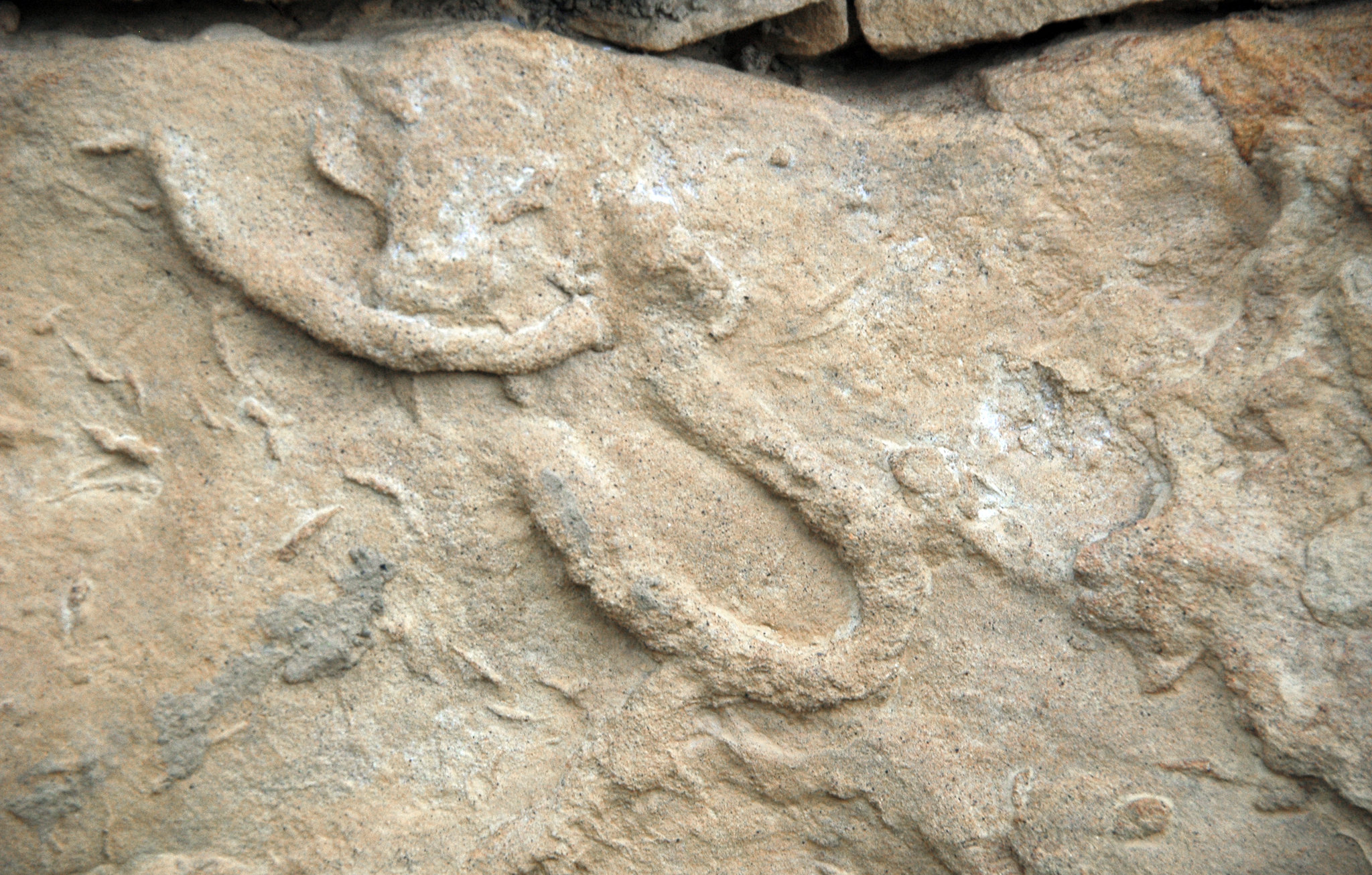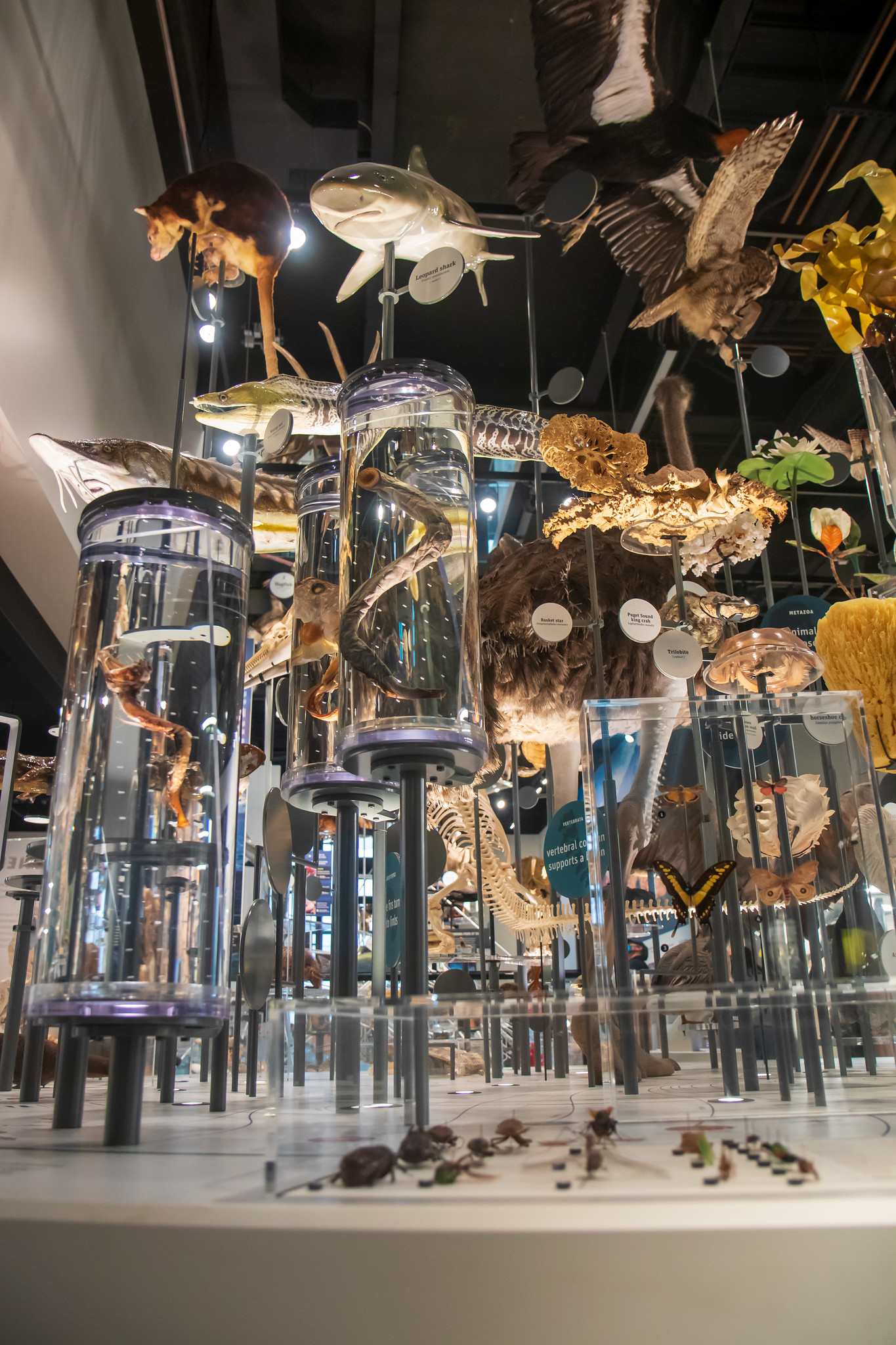Ever find yourself on a border between two distinct cities?

The city behind you may have its distinct architectural style, or it has its own unique food identity; the city in front has its own set of characteristics that make it culturally separate from the city from where you came.
However, sitting on the border, you notice that it has a mix of both cities; the buildings may look like those of one city, while the food inside the restaurant is more representative of food from the other. The area between the two cities signifies that one area is gradually giving way to another.
In the same way that two cities have a sort of “grey area” in between, organisms, too, experience the same when it comes to evolution. After all, the name of the game for evolutionary change is gradual—that is, major adaptations and changes don’t happen over a single generation.

Thus, paleontologists work hard to fill in as much of the missing blanks between two fossils (or sometimes between a fossil and a living organism, even) as possible. These missing blanks are pretty analogous to the “grey area” between cities, where characteristics that define one species may either slowly disappear or are slowly being introduced generation after generation as evolution takes its course, slowly deviating into the other species from the same grouping of branches on the tree of life.
These blanks are known as transitional fossils, and quite a number of these interesting organisms have their remains locked in stone.
Tale as Old as Time

Fossils, the preserved remains of ancient life forms, can provide a fascinating glimpse into Earth’s evolutionary history. Transitional fossils, specifically, bridge the gap between ancestral species and their descendants, showcasing characteristics both groups share, much like snapshots in the long journey of evolution.
These fossils are particularly vital when the descendant group appears significantly different from its ancestral one in terms of anatomy and lifestyle. They remind us that our classification of species into groups is a human construct applied retrospectively to a continuum of variation. Transitional fossils help us understand how species have changed, but it is important to note that they may not always be direct ancestors of modern species.
Looking Back

In 1859, Charles Darwin published “On the Origin of Species,” which revolutionized our understanding of evolution. However, at the time, the fossil record was not well-documented. Darwin acknowledged the lack of transitional fossils as a significant challenge to his theory. He attributed this gap to the incomplete nature of the fossil record.
Nevertheless, just two years after Darwin’s work, Archaeopteryx was discovered; this ancient creature, resembling a cross between a dinosaur and a bird, became one of the most iconic transitional fossils. Since then, scientists have discovered numerous transitional fossils that bridge the gaps between various groups of organisms.

Historically, taxonomy relied on morphological similarities to group organisms into categories. Transitional forms were considered as intermediary links between these groups. However, with the advent of cladistics in the 1990s, our understanding of taxonomy evolved. Cladograms, which illustrate evolutionary lineages, emphasize natural groups called monophyletic groups. Transitional fossils now represent early branches on these cladograms, showing features that are not fully developed but characteristic of their respective group.
Roll Call
So, without further ado, here are some of the more famous examples of transitional fossils that you may have at least heard of:
Archaeopteryx

Archaeopteryx, sometimes known as “Urvogel” or “Primeval Bird,” is a genus of avian dinosaurs. Its name combines “ancient” and “feather” in Greek, and it was once considered the oldest known bird. It lived about 150 million years ago in southern Germany when Europe was a group of islands in a warm, tropical sea.
Despite its bird-like appearance, Archaeopteryx had features similar to small dinosaurs, such as teeth, claws, and a long tail. These characteristics suggest it was a transitional fossil between non-avian dinosaurs and birds. However, recent discoveries of feathered dinosaurs have raised questions about bird evolution. First named from a single feather in 1861, Archaeopteryx played a crucial role in confirming Charles Darwin’s theories and remains significant in the study of bird origins and evolution.
Australopithecus afarensis

Australopithecus afarensis, an extinct species in East Africa around 3.9-2.9 million years ago, became famous in the 1970s when significant fossil finds were made, including the well-preserved skeleton “Lucy.” This species is thought to have descended from A. anamensis and is a potential ancestor of Homo, although this is debated.
A. afarensis had distinct facial features and debated size differences between males and females. It was a competent biped, walking on two legs less efficiently than modern humans. Their diet was likely omnivorous, including plants, possibly meat, and their habitat varied widely. Early hominins’ social structure and group dynamics were challenging to determine, and they were vulnerable to large carnivores.
Pakicetids

The Pakicetidae (“Pakistani whales”) were a family of early whales known to have lived during the Early Eocene period in Pakistan. Initially misidentified as fish-eating mesonychids, they were later recognized as cetaceans, with the genus Pakicetus described in 1981. Fossils of pakicetids have been found in northern Pakistan and northwestern India, indicating that they lived in terrestrial or freshwater environments rather than marine habitats.
Despite having long limbs, their tiny hands and feet suggest they were not adept swimmers. They likely dwelled near bodies of freshwater and had a varied diet, possibly consuming land animals and aquatic organisms. Pakicetids had several distinctive traits, including similarities to artiodactyls, and shared characteristics with cetaceans, such as specific auditory features and specialized teeth adapted for shearing. Their existence in the Eocene era was favored by the coastal geography of Pakistan, allowing for their evolution and diversification.
Tiktaalik

Tiktaalik is an ancient, extinct fish that lived around 375 million years ago during the Late Devonian Period. It’s a significant discovery because it had features that resembled both fish and four-legged animals, making it a crucial transitional fossil in the evolution from aquatic creatures to land-dwelling animals. Tiktaalik had a unique flat head, cleaver-shaped fins, and the ability to prop itself up in shallow water, which suggests it could use its limbs for support, similar to how terrestrial animals use their limbs. This fish is a key ancestor to amphibians, reptiles, birds, and mammals.
It was discovered in Arctic Canada in 2004, shedding light on the evolution of limbs and digits in early tetrapods. Tiktaalik also had an intriguing combination of fish-like and tetrapod-like characteristics in its limb structure, adding complexity to our understanding of this evolutionary process.
Runcaria

Runcaria heinzelinii is an extinct plant species discovered in Middle Devonian Belgium, named after Jean de Heinzelin de Braucourt. It’s a crucial find as it predates early seed plants by about 20 million years and offers insights into the evolution of seeds.
Fossil remains of R. heinzelinii consist of short, branched stems with a radially symmetrical megasporangium at the tip, enclosed by a cupule. This megasporangium shows features suggesting wind pollination, making it almost like a seed plant, except it lacks a solid seed coat and a mechanism for guiding pollen to the ovule. This discovery sheds light on the possible origins of seeds.
Clearing the Air

Only some transitional forms appear in the fossil record, as preservation conditions are rare, and not all organisms fossilize well. It is important to understand that transitional fossils offer a glimpse of evolution but do not represent every step in the journey. The fossil record remains incomplete and skewed towards organisms with hard parts.
One common misconception is that transitional forms must be direct ancestors of current species. However, evolution produces complex branching patterns, and the fossil record is often incomplete. Transitional fossils typically reveal features shared with common ancestors of different groups rather than being direct ancestors themselves.
Conclusion

Transitional fossils provide invaluable insights into the evolutionary history of life on Earth. While the term “missing link” is often used, it is crucial to remember that evolution is not a linear process but a branching one. The discovery of these fossils has reshaped our understanding of how species change, highlighting the intricate patterns of life’s development. These fascinating remnants testify to the ongoing journey of evolution and our quest to unravel the mysteries of life’s history.
References
- Montanari, S. (2015, November 17). Four Famous Transitional Fossils That Support Evolution. Forbes; Forbes. https://www.forbes.com/sites/shaenamontanari/2015/11/17/four-famous-transitional-fossils-that-support-evolution/
- Montgomery, S. (2009). Transitional Fossils. Charles Darwin & Evolution: 1809-2009; Christ’s College, Cambridge. https://darwin200.christs.cam.ac.uk/transitional-fossils
- Transitional features. (2021, May 1). Understanding Evolution. https://evolution.berkeley.edu/lines-of-evidence/transitional-features/
- Wood, B. (2019). 6. Archaic and transitional hominins. In B. Wood, Human Evolution: A Very Short Introduction (pp. 73–85). Oxford University Press. https://doi.org/10.1093/actrade/9780198831747.003.0006











